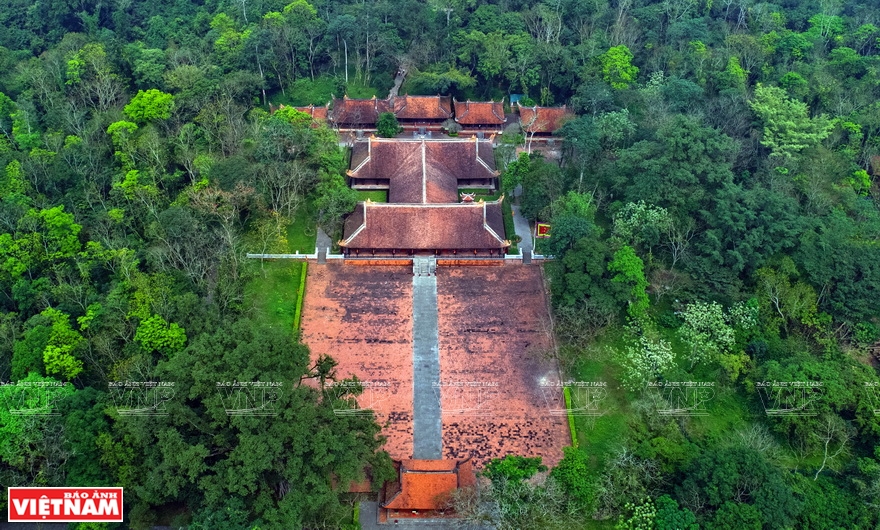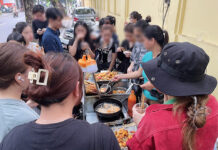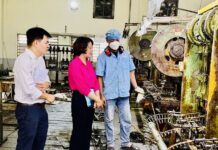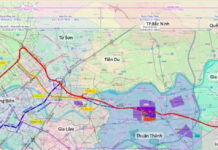| Lam Kinh has the tombs of the kings of the Le dynasty, including Huu Lang – the tomb of King Le Thai Tong; Lang Khon Nguyen,- the tomb of Queen Ngo Thi Ngoc Giao, (mother of King Le Thanh Tong); Chieu Lang- King Le Thanh Tong; Du Lang- King Le Hien Tong; and Kinh Lang-King Le Tuc Tong. Each tomb has its own architecture and different flanking statues. Particularly, the tomb of Queen Ngo Thi Ngoc Giao is flanked by women statues. |
Lam Kinh was built with “a mountain in the back and a river in the front”, which is regarded as a golden position in oriental geomancy. Lam Kinh has Dau mountain in the back to the north, Huong and Ham Rong mountains to the west, and Phu Lam forest to the east. It faces the Chu River to the south with Chua mountain as a screen. The site includes the southern gate, dragon royal court, central sanctum and royal ancestral temple.
 The 200-ha Lam Kinh historical site is the location of the Tay Son uprising against Chinese Ming invaders led by Le Loi. Le Loi came to the throne in 1428 and named the country Dai Viet. Photo: Cong Dat |
Lam Kinh attracts local and foreign visitors not only for its original oriental architecture but mysterious legends about the tombs of the kings of the Le dynasty.
Vinh Lang, the tomb of King Le Thai To, was built on a flat area with Dau mountain at its back, two mountain ranges on the left and right, and Chua mountain as the screen.
At this tomb, there is a mysterious “laughing” guava tree. When visitors gently tickle the trunk, the whole tree would shake as if there were a strong wind blowing through it. It is also believed that visitors will feel relaxed and calm holding the tree branches while closing their eyes.
|
Mock-up of Lam Kinh historical site in the showroom. Photo: Thanh Giang |
In the tomb area, there is also a 600-year-old ironwood tree, the tallest tree in Lam Kinh forest. The tree was said to shed all its leaves in 2010 after a project to reproduce Lam Kinh’s central sanctum was approved. The tree was believed to carry the mission of replicating the palace for future generations because its trunk and branches were enough to make a set of props for the building, including the main, sub and corner props. The diameter of the trunk at the root coincidentally had the same size of the main prop (0.8m) while that at the top has the exact size of the sub prop (0.6m).
Lam Kinh, where Le Loi, national hero Le Lai and other kings of the Le dynasty are worshipped, is an original imperial temple of the Le dynasty and the historic location of the Tay Son uprising. It was recognized as a national historical relic in 1962 and a special national relic in 2013./.



